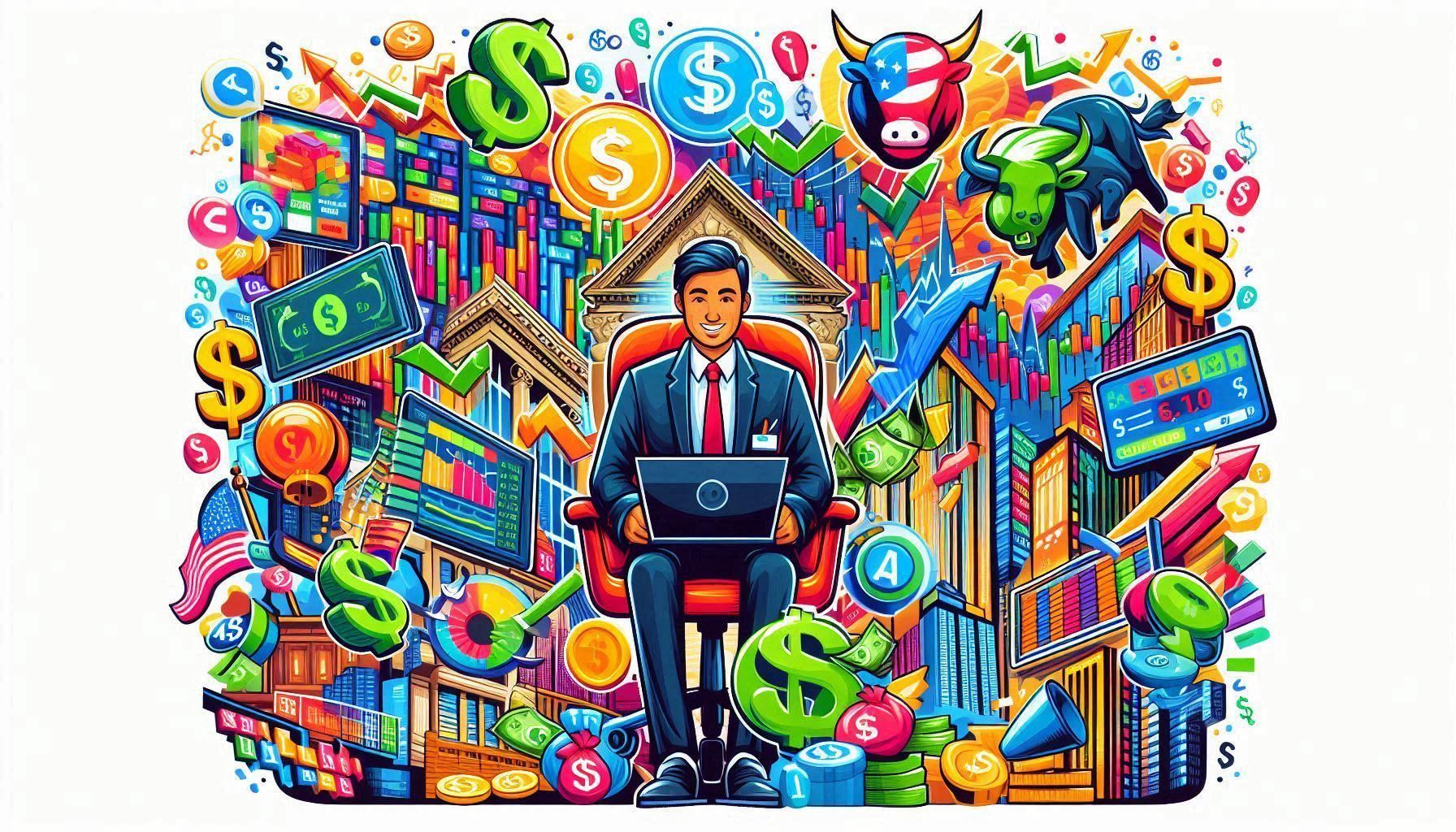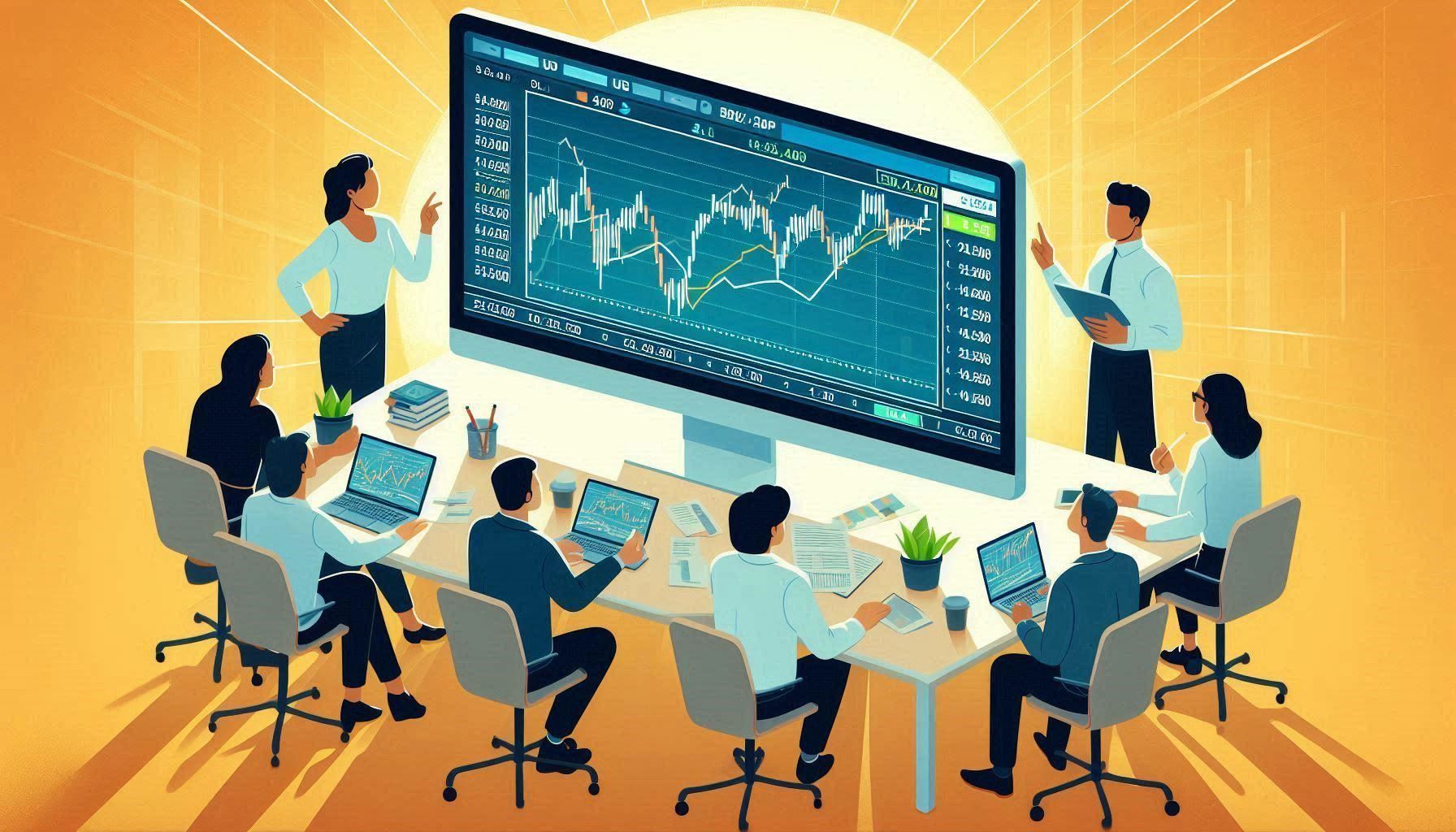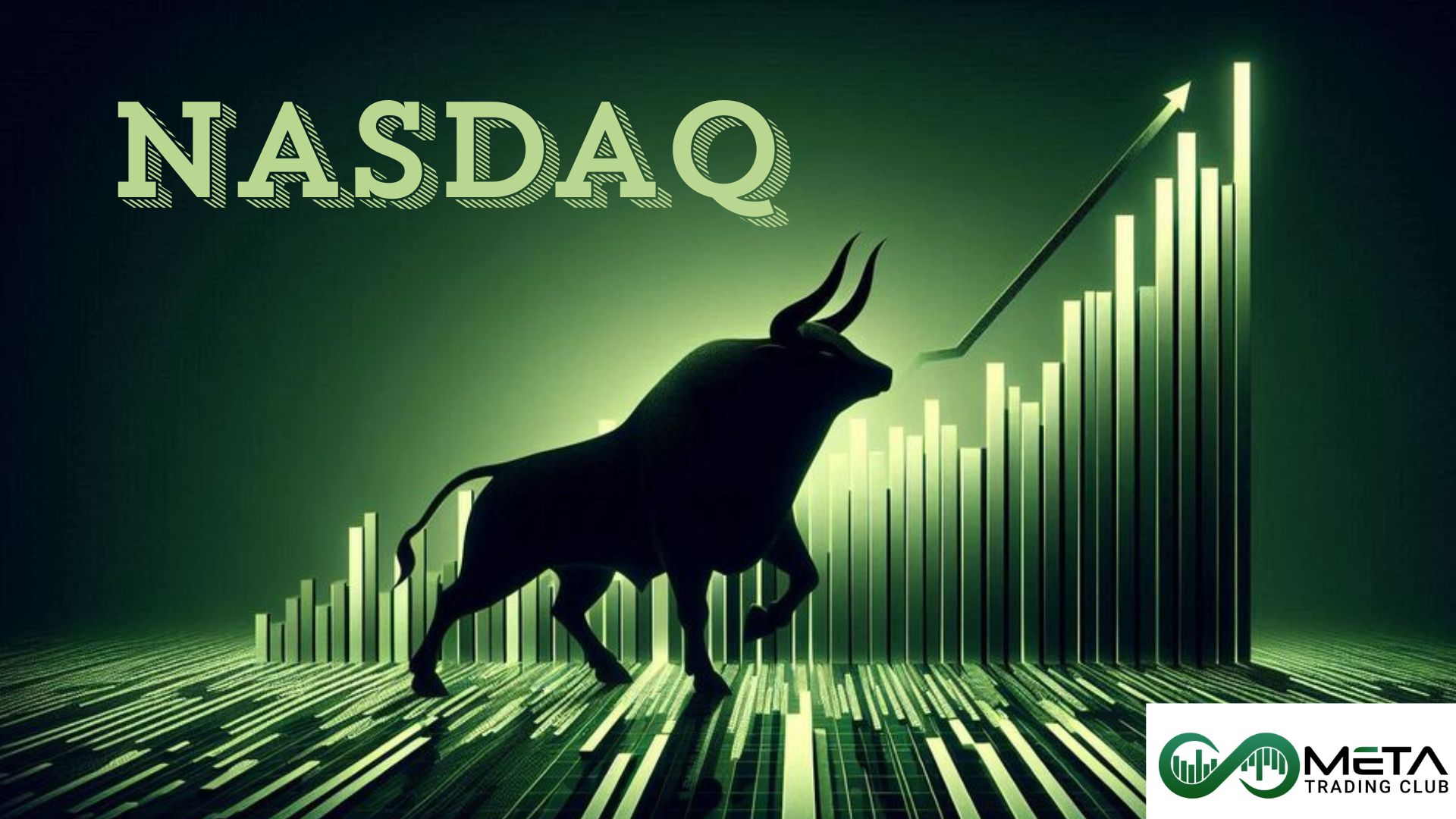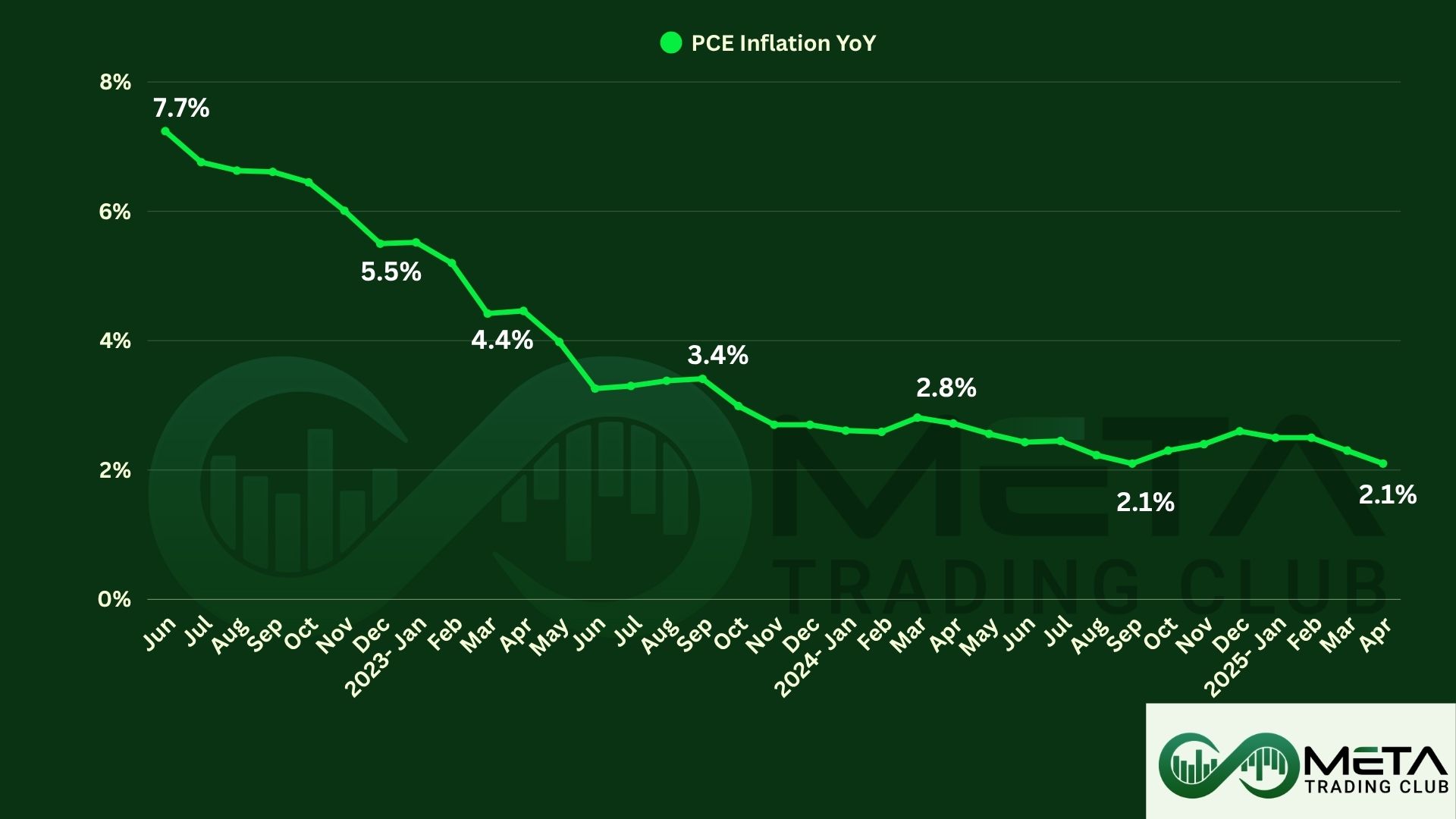You hear it all the time: “Don’t put all your eggs in one basket!” But if you only have $100 to invest, you can’t exactly go out and buy 500 individual shares in large-cap corporations, each of whose stock prices could be hundreds or even thousands of dollars. You can, however, buy a stock of an exchange-traded fund (ETF) that owns shares in 500 different companies. Let’s get to know what an ETF is.
Table of Contents
What is an ETF?
Exchange-traded funds (ETFs) are a basket of securities that track the performance of stock market benchmarks such as the Dow Jones Industrial Average or the S&P 500.
ETFs trade just like stocks and bonds, which means traders can buy and sell shares throughout the trading day. That can impact the share price on the upside and downside. Low fees are a feature of ETFs.
ETFs have grown popular over the more than two decades because they’re cheaper than mutual funds, more tax-efficient, and easy to buy and sell. The first U.S. based stock ETF splashed on the scene in 1993 when State Street Global Advisors launched the Standard and Poor’s Depositary Receipts (SPDR).
This stock ETF tracks the performance of the S&P 500 and today remains the largest and most traded ETF in the world with over $500 billion in assets under management.
Today traders can find an ETF that covers pretty much every asset class whether it’s equities or real estate. ETFs have more than $11 trillion in Assets Under Management (AUM) and if Bank of America’s projection proves true will swell to $50 trillion in AUM by 2030.
History of ETFs
Prior to the launch of the first ETF in the early 1990s, index trading was all the rage. But the high cost, low volume and minimum trade requirements shut regular traders out.
With high interest in indexing, the fund companies set out to create low-cost passive index funds they can bring to the masses. In 1993 that became a reality when State Street Global Advisors launched the first stock ETF, the Standard and Poor’s Depositary Receipts (SPDR).
This stock ETF tracks the performance of the S&P 500. Renamed in August of 2017, the SPDR S&P500 ETF is still the largest and most traded ETF in the world with close to $500 billion in assets under management.
In 1996, three years after the debut of SPDR, the first international ETF launched. It took six more years before the first bond ETF hit the market in 2002.
It wasn’t long after the debut of SPDR that other fund companies got into the ETF game. During the late 1990s and early 2000s, several different ETFs were created tracking everything from the Russell 3000 to U.S. Treasury bonds.
Despite the growing choices, it wasn’t until after the Great Recession of 2008 and 2009 that ETFs took off driven by a preference for passive, cheap investing. Many traders saw their life savings disappear and no longer saw value in paying more for actively managed funds.
In 2008 ETFs had $531 billion in assets under management, today that stands at more than $11 trillion. According to Bank of America, the ETF market is poised to hit $50 trillion in assets by the next few years.
Today there are thousands of ETFs tracking every asset class. The most popular ETFs track equities, fixed income, commodities, forex currency, crypto currency, real estate, Futures and niche investments. BlackRock, Vanguard, and State Street by far are the dominant players in the ETF market.
BlackRock’s iShares is in the lead with 39% market share, while Vanguard is in second controlling 25% of the market, and State Street is in third place accounting for 16% share.
Despite the huge growth, ETFs remain less popular than their mutual fund counterparts, which have about $32 trillion AUM of mutual funds just in the US.
Types ETFs
There’s an ETF for nearly every purpose and asset class. The most common types include:
Index Funds (long ETFs)
These take a “long position” on an underlying stock market index. Index funds typically own shares of companies in a specific index in the same weighted proportions as the index. If the index rises, so do share prices in long ETFs, by about the same amount minus any expenses and trading costs.
Inverse ETFs
The opposite of long ETFs, these take short positions on the underlying index. Share prices move in the opposite direction to ETF shares. Think of them as betting against the market: if the index loses money, you win. Be aware that short selling comes with inherently more risks.
Commodity and Precious Metal ETFs
These ETFs invest in certain commodities or precious metals, or a combination of many. For example, an ETF that invests in gold may hold gold stocks or claims on actual gold bullion held in trust by a custodian. You can also trade ETFs that offer broader exposure to multiple precious metals or to commodities more generally. Shares in commodity ETFs typically move in rough tandem with the prices of the underlying commodity.
Industry ETFs
These stock ETFs own a portfolio of stocks representing an industry, such as energy and oil, technology, mining, transportation, health care and so on.
Country or Region ETFs
In this stock ETFs firms buy shares in companies that represent a cross-section of industry in a given country. For instance, they may own shares of the largest 50 publicly traded stocks in a specific country as measured by market capitalization. You can also trade regional ETFs as well, which focus on entire continents.
Leveraged ETFs
Leveraged funds use borrowed money to “gear up” their portfolios, magnifying returns. This also magnifies risk as well. For instance, a leveraged S&P 500 ETF will seek to roughly double the returns of the index, less interest and expenses. But leverage will also double the size of losses as well. You can also trade leveraged inverse ETFs, but they come with even more risk given the lack of limits on losses.
Currency ETFs
These securities seek to capture a return on foreign currency fluctuations and growth. A currency ETF is an exchange-traded fund (ETF) that tracks the relative value of a single currency or a basket of currencies. Currency ETFs can be used for various purposes, such as speculating on forex markets, diversifying a portfolio, or hedging against currency risks. They trade on stock exchanges like stocks and usually do not have active management.
Bond ETFs
These ETFs own large, diversified fixed-income portfolios comprising hundreds or even thousands of bonds. This gives an investor exposure to a wide variety of fixed income securities, instead of investing in one specific holding.
The benefits of trading in ETFs also depend on what type of trader you are. Intra-day trading opportunities created by ETFs could benefit short-term traders but will be less suitable to a trader looking to profit in the long-term. To learn to trade and manage trading risks download free trading eBook.
Moreover, exchange-traded funds can also be affected by market liquidity. It is important to assess the spread between the bid and the ask price. If there is a large spread, this can be a sign of an illiquid investment.
Advantages of ETFs
There are plenty of reasons to love stock ETFs. In fact, they are the heart of many index traders. As you create and adjust your trading strategy, consider ETFs as trading products.
1. Diversification
Because stock ETFs own many individual securities, you get the same diversification benefit by trading stock ETF. By buying a single share, you effectively trade every stock or other security owned by that ETF.
That means you don’t have to spend hours researching and trying to pick stocks. You can simply trade in “the market” broadly by trading in stock ETFs that own thousands of stocks representing the bulk of a region’s publicly traded companies.
2. Lower Cost
First, you can buy shares in ETFs without a transaction fee by trading through a commission-free brokerage. Examples include Charles Schwab, Vanguard, and TD Ameritrade.
Second, ETFs tend to charge much lower expense ratios. Most ETFs are passively managed means they don’t rely on a human fund manager to pick and choose investments. Instead, an algorithm manages the individual securities owned by the fund. As share prices rise and fall for companies in the S&P 500, for example, ETFs that mimic it simply adjust their weighting based on the same rules as the index.
Because passive ETF shareholders don’t need to pay a manager or a team of analysts and brokers to buy and sell funds on their behalf or to manage fund inflows and outflows, exchange-traded funds typically charge much lower expense ratios than traditional mutual funds.
Their expense ratios also tend to be lower than mutual funds, because even these funds have to keep enough staff on hand to process constant purchases and redemptions.
3. Liquidity
When you buy a mutual fund, you can only buy fund shares once per day, at their Net Asset Value (NAV) as of the last market close. As, you can’t buy or sell shares during the day, making mutual funds impractical for day trading.
If you own a mutual fund in the evening off-hours, then you hear disastrous news the next morning after the markets open, you cannot sell until after 4pm Eastern time. Likewise, you cannot buy on good news. Purchase orders don’t get logged until after 4pm the following day. In contrast, you can buy and sell ETFs throughout the trading day using your brokerage account. Bear in mind that some ETFs trade more frequently than others, making it easier to find a willing buyer or seller in a hurry.
Note that liquidity varies among ETFs, just as it does among individual stocks. Thinly traded ETFs often see a wide gap between buyer’s bid price and seller’s ask price. In these cases, selling shares (particularly a large number of shares) can cause a downward swing in prices.
4. Transparency
Anyone with a brokerage account can look up an stock ETF’s price history, trading volume, and holdings. You can do this in real time, with no restrictions.
However mutual funds typically disclose their holdings monthly or quarterly, so you don’t know their exact current holdings at the time when you buy or sell shares.
5. Ability to Short Sell
With mutual funds, you can’t engage in short selling, the practice of borrowing shares and selling them in the expectation that share prices will fall. If prices fall, the short seller buys back the shares at the new price and returns them to the original owner, keeping the difference.
Traders can, however, short sell indexes, industries, countries, and entire markets using ETFs. Although it’s worth mentioning that only experienced Traders should consider short selling. If you’re wrong, and the shares rise instead of fall, there’s no limit to your losses. When you invest traditionally in a security, you only risk your initial investment amount.
6. Tax Benefits
Index funds, including ETFs, tend to be tax-efficient and ideal for holding in taxable accounts. This is because portfolio turnover in index funds is low, whereas managers of actively managed funds sell securities and buy new ones every time they feel like it.
Index funds and ETFs only sell shares when new securities get dropped from the index, and buy shares only when they are added to the index. Otherwise, they only tweak percentages as the weighting of shares shifts.
Every time a fund sells a share at a profit, the Internal Revenue Service (IRS) assesses capital gains tax, which gets passed on to shareholders. Since index funds and ETFs don’t sell shares often, it is rare for them to generate a taxable distribution for their shareholders.
The brokerage issuing ETFs can also avoid unnecessary taxes by making “in-kind” distributions to shareholders. This means the fund can send securities from the portfolio directly to shareholders for individuals to sell themselves if they want the cash. This helps shelter the fund’s remaining shareholders from the tax consequences of the sale.
Beware though that if the ETF’s portfolio generates dividend income, this income is taxable, just as it is with mutual funds.
Disadvantages of ETFs
No asset type is without its downsides. As you compare ETFs to mutual funds, keep the following drawbacks in mind as well as the upsides listed above.
1. Potential Illiquidity
As outlined above, some ETFs boast higher liquidity than others. If an ETF doesn’t see much trading volume, then buy orders can push up the cost, and sell orders can drive down the price. You can still buy or sell quickly, but not necessarily at the price showing currently.
2. Higher Cost for Actively Managed Funds
Not all ETFs represent passive index funds. Some ETFs are actively managed by fund managers aiming to beat the market. Given the human labor involved, these actively managed funds cost more. Specifically, they charge a higher expense ratio: the annual management fee charged to shareholders.
3. Easy Way to Earn Market Average Returns
While not all ETFs are index funds, ETFs let you trade in a broad basket of equities. And index funds offer a particularly easy way to earn returns that closely mirror a given stock index.
Index funds are as close as traders can get to trading in the market itself. If the S&P 500 jumps by 5%, so do index funds that track it. But that means that traders inherently earn market average returns, rather than beating the market like so many traders aim to do.
traders try to beat the market in many ways, from trying to time the market to picking individual stocks to buying actively managed mutual funds.
4. Small Discounts
When fund shares get traded in the open market as opposed to being redeemed directly from the fund company itself, traders directly determine share prices. This market price can be higher or lower than the aggregated value of the shares in the portfolio.
With closed-end funds, traders can sometimes buy fund shares at a 5% to 15% discount to Net Asset Value (NAV) while still getting the full benefit of any dividends or interest payments from the fund and the potential for capital appreciation if the discounts narrow.
With stock ETFs, on the other hand, discounts are typically either extremely narrow or nonexistent. Traders seeking to benefit from buying fund shares at a discount should explore buying an actively managed closed-end mutual fund rather than an ETF. This is particularly true for income-oriented traders.
5. DRIPs Not Always Available
Many traders like to have dividends automatically reinvested in fund shares using a Dividend Reinvestment Plan (DRIP). However, not all brokerages and funds allow this, as it can potentially require too much fund administration and drive-up fund costs.
A big part of the logic of ETF trading is the low-cost structure of ETFs. When you buy shares in a stock ETF, double check whether you can reinvest dividends automatically. If not, expect to receive your dividends and interest payments directly, and to pay taxes on them if you don’t hold them in a tax-advantaged account.
Why Are ETFs So Popular?
The low-cost nature of ETFs is a top reason why they’ve resonated with traders in good and bad times.
- The expense ratio on ETFs is 0.2%; for mutual funds, it’s 0.55%.
- There’s no minimum investment required to own shares of an ETF.
- If there’s gains from any stock sales it can trigger a tax event. The higher the turnover the more tax exposure. That doesn’t happen as often with ETFs.
- ETFs are passive, tracking an index, which means less turnover and taxable events.
- ETFs are also attractive to day traders because of the ease of buying and selling them.
- Since they trade like stocks, traders can employ trading strategies such as shorting and buying on margin with stock ETFs.
- ETFs can give traders diversification if they spread their trade across different funds. That’s not to say stock ETFs aren’t without risk, specialty ETFs that track a specific sector like airlines or telecommunications are more volatile than those tracking the S&P 500. Sector ETFs tend to be subject to changes in the stock market and may not be suitable for risk-averse traders.
Best ETFs to Trade?
Finding the best ETFs to buy in an uncertain market environment can seem like a tall task, but these three picks are a good place to start.
1. Vanguard 500 ETF
Vanguard created the index fund. If you’re looking for an S&P 500 index fund, the Vanguard S&P 500 ETF is hard to beat.
It offers a dirt-cheap expense ratio of just 0.03% (compared to the 0.78% average for similar funds). This lower expense ratio means traders will pay just $3 in annual fees for every $10,000 traded with the fund rather than $78 in a typical competing fund.
The Vanguard S&P 500 ETF is one of the largest and most popular ETFs (third in assets under management). The ETF’s combination of low cost and large size makes it a great choice if you’re looking to trade in the broader market. Because of its history, diversification, and exposure to blue chip stocks, many traders consider it one of the best ETFs to buy and hold.
2. Invesco QQQ Trust
If you’re looking for exposure to big tech stocks, Invesco QQQ Trust is an excellent choice. The ETF tracks the Nasdaq-100 index, which includes 100 of the Nasdaq’s largest nonfinancial companies.
It’s one of the best-performing ETFs. Since launching in 1999, the Invesco QQQ Trust had generated a total return of more than 920% by mid-2024. That easily outpaced the S&P 500’s roughly 550% total return.
The Nasdaq-100’s focus on innovative technology companies positions it to continue delivering strong total returns, especially as artificial intelligence accelerates growth in the tech sector in the coming years.
3. Vanguard Growth ETF
If you want to trade growth stocks but don’t want to be an active stock picker, the Vanguard Growth ETF makes that easy. The ETF holds large-cap growth stocks and tracks the US Large-Cap Growth index.
Like the Invesco QQQ Trust and the Vanguard 500 index, the Vanguard Growth ETF’s largest holdings are Apple and Microsoft. The growth-focused ETF also holds many other growth stocks among the roughly 200 companies it owned as of mid-2024.
The Vanguard Growth ETF offers a rock-bottom expense ratio of just 0.04%. Its low cost makes it a good deal for anyone looking for a growth stock ETF.
Final Words
Exchange-Traded Funds (ETFs) are investment vehicles that trade on stock exchanges. They offer diversification, liquidity, and low expense ratios. However, ETFs allow traders to track various assets, such as indexes, commodities, sectors, or even specific stocks. When you trade an ETF, you get exposure to a diversified portfolio of underlying assets.
If you are interested in stock ETFs and want to trade them, I recommend you first learn how to trade correctly. In order to achieve this goal, you can participate in our incubator program to enhance your trading skills. In addition, if you want more detailed information about trading ETFs, read How to trade ETFs.
FAQs
- What is ETF and how does it work?
An ETF is designed to track as closely as possible the price of an index or a collection of underlying assets. A financial firm purchases a basket of assets (stocks or bonds, currencies or commodity futures contracts) that comprise the fund. The firm then sells shares that track the value of the fund, via broker. The shares can be traded on markets just like stocks. - Is an ETF better than a stock?
Each has its pros and cons. Stocks tend to be the more complex option, as it takes time and energy to select individual stocks. In contrast, most ETFs offer a simpler option because they do much of the heavy lifting for a trade; in exchange for commissions, a team of professionals selects all the stocks for you. - Is ETF better than mutual fund?
Mutual funds and exchange-traded funds (ETF) can both offer many benefits for your trade, including instant diversification at a low cost of ETFs. If you have a small amount of money and you know how to trade, better to pick an ETF. - Is ETF a good investment?
ETFs are considered to be low-risk investments because they are low-cost and hold a basket of securities, increasing diversification. For most individual investors, ETFs represent an ideal type of asset with which to build a diversified portfolio. - Are ETF funds risky?
ETFs are diversified funds, which reduces risk. So, ETFs are less risky, the single biggest risk in ETFs is market risk.



















